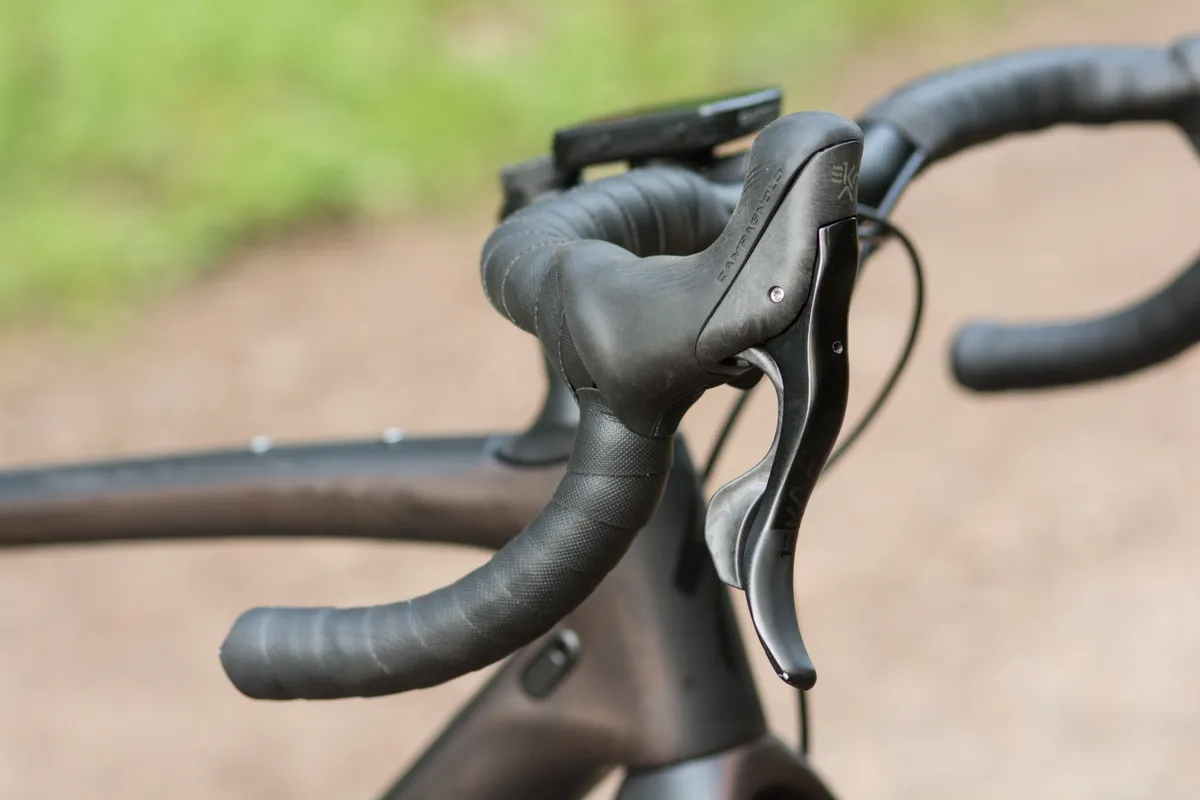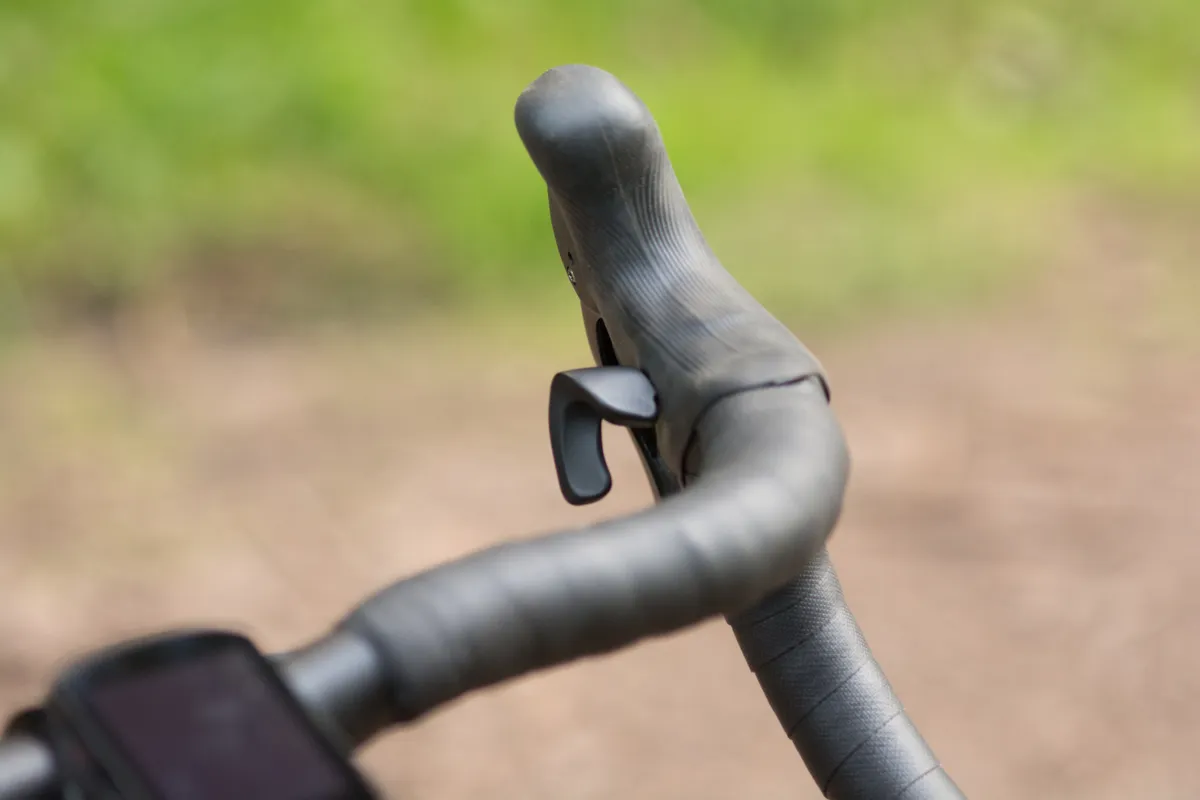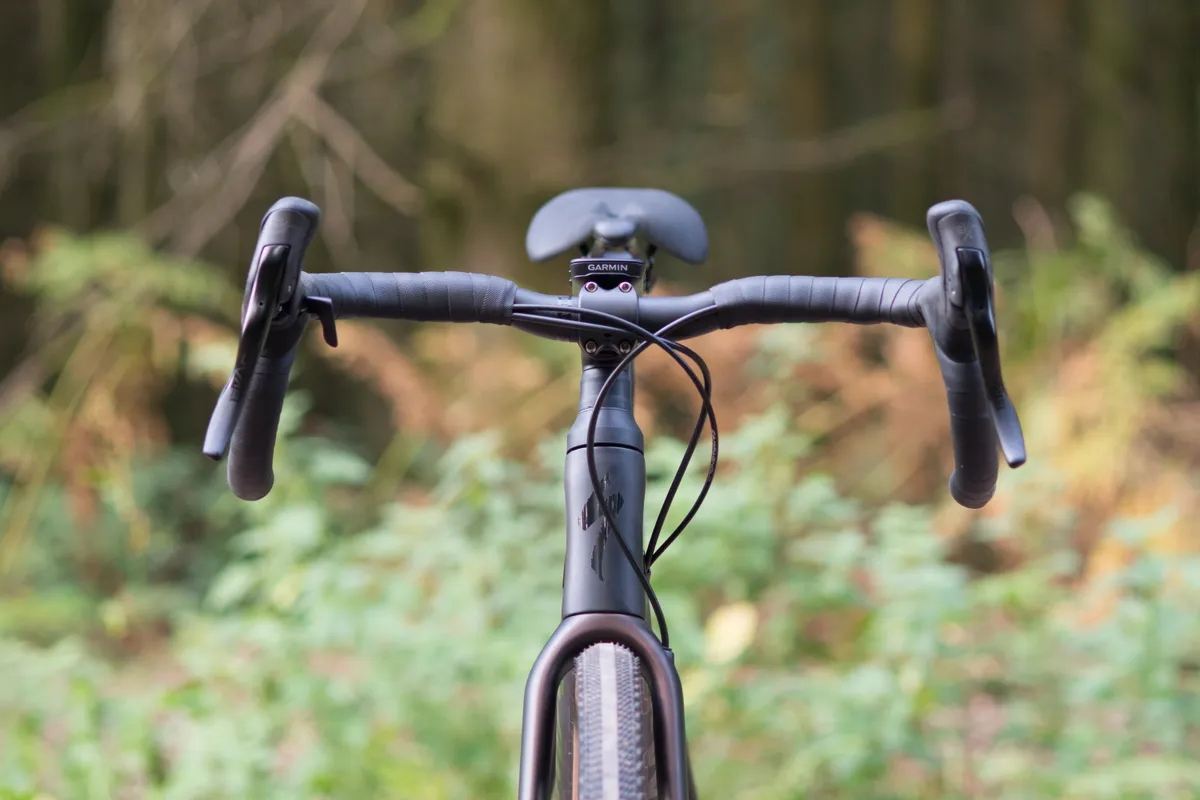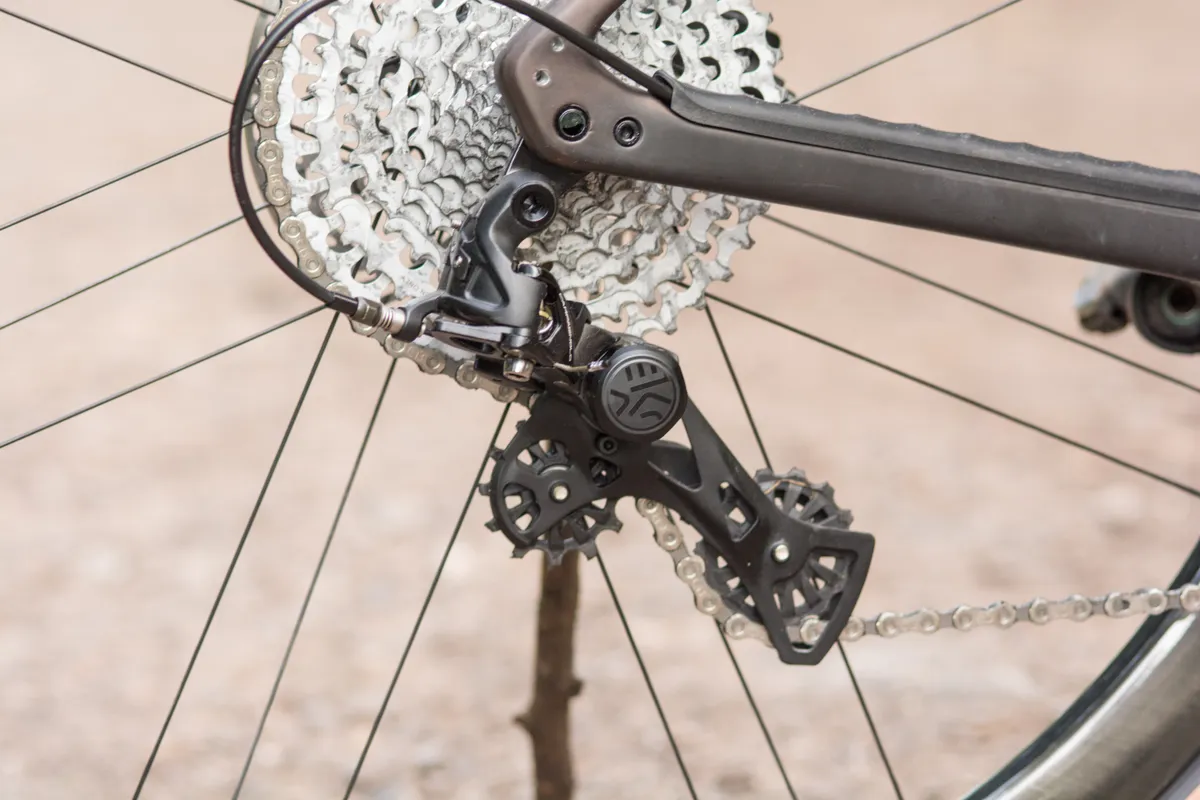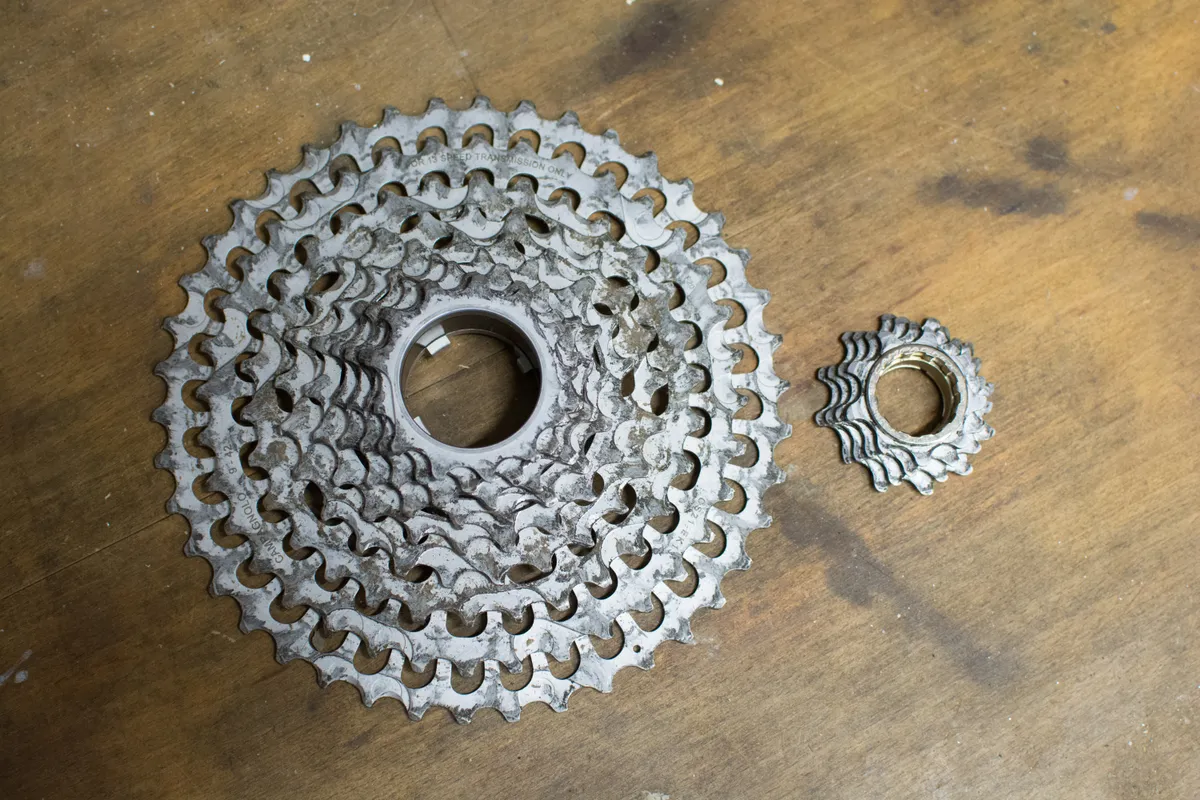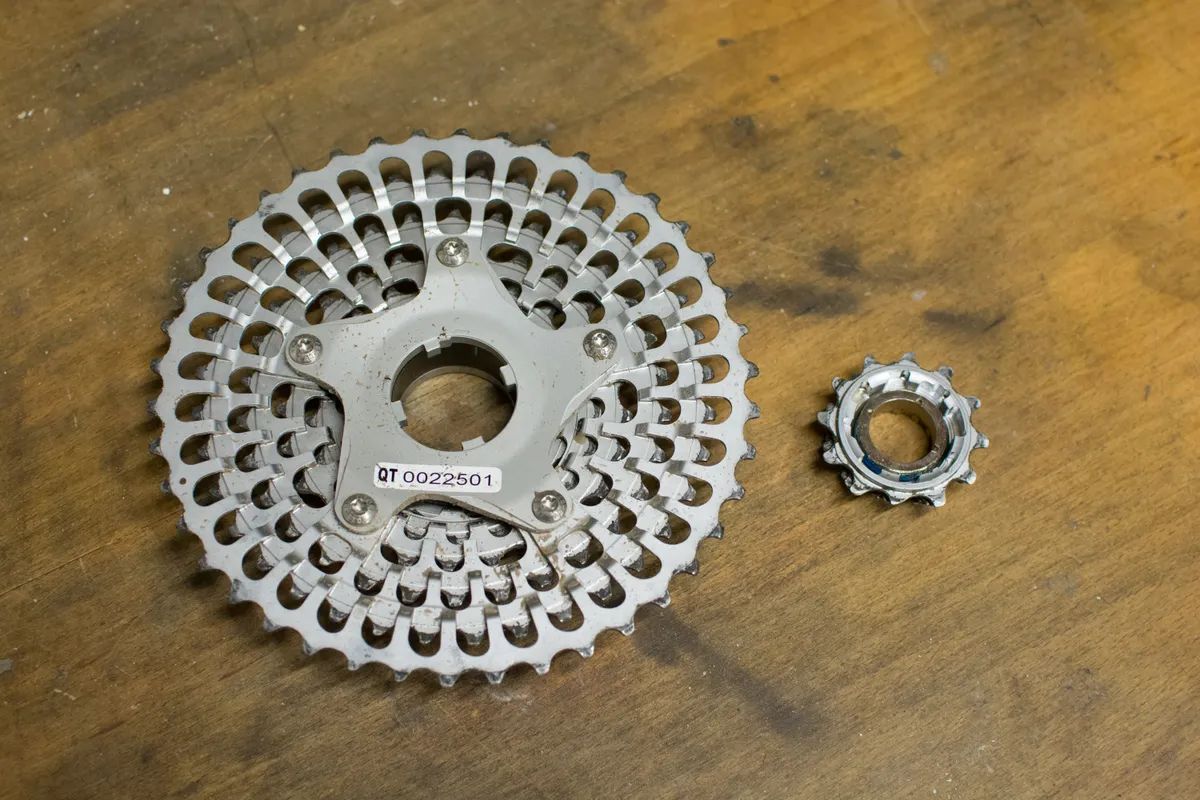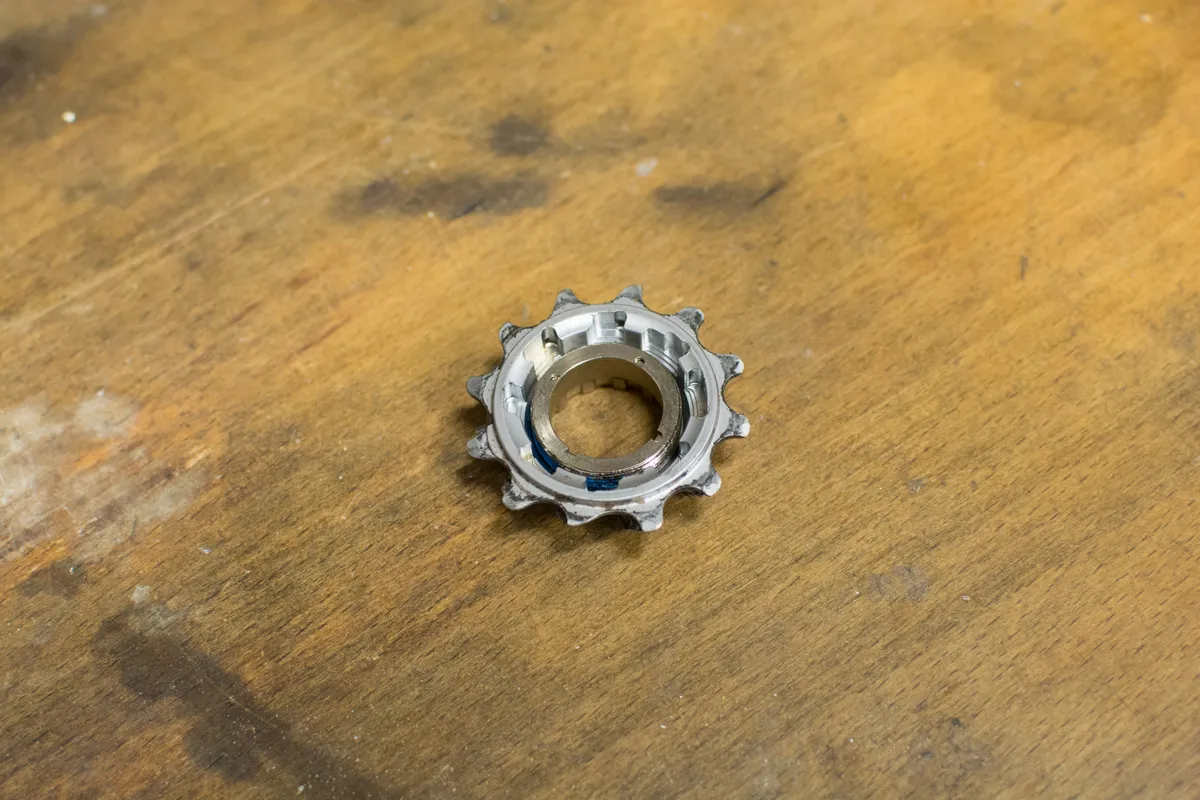Campagnolo Ekar is a mechanical 13-speed 1×-only gravel groupset with a cassette that starts with a tiny 9-tooth sprocket. It joins an ever-growing list of gravel-specific components designed for the hottest riding niche.
A complete Ekar groupset retails at £1,449 / $1,764 / €1,696, putting it in competition with Shimano’s GRX Di2.
Ekar is a thoughtfully designed, solidly built groupset with an appealingly mechanical feel that's distinctly Campagnolo. It’s somewhat expensive and has its quirks, but fans of the brand will love it and it's a real rival to existing gravel bike drivetrains.
Campagnolo Ekar levers and shifting
Campagnolo has stuck to its standard shifting arrangement with a paddle behind the brake lever for downshifts (easier gears), and a thumb paddle for upshifts (harder gears).
The hood and lever design is broadly similar to the brand’s road groupsets, but the thumb paddle is quite different, featuring a stepped design that makes it very easy to reach whether you’re shifting from the hoods or the drops. As the groupset is 1×-only, only the right lever is a shifter.
Campagnolo refers to Ekar’s shifting as ‘Ultra-Shift’, which used to denote levers that shift multiple gears up or down the cassette in a single action. However, in Ekar’s case, multiple downshifts are available (up to three in theory, although push the lever far enough and you’ll be rewarded with a fourth), but the thumb paddle clicks through one gear at a time.
This is no bad thing because, when you’re riding on rough surfaces, you might accidentally upshift through more gears than you intended when resting your thumb on the paddle.
I’ll cover braking in a separate section below but, if you’re a fan of Campagnolo’s road shifting, you’ll feel right at home with Ekar. It offers a similarly definitive ka-klunk from gear to gear, one which contrasts with the more muted snick of Shimano mechanical groupsets or the klack of SRAM.
It became apparent early on in my testing that Ekar is quite sensitive to adjustment – hardly surprising for a mechanical groupset with 13 gears.
I initially struggled to achieve consistent shifting up and down the cassette but this wasn’t the groupset’s fault – the hanger was slightly bent, presumably having been knocked in transit.
Nevertheless, even with it carefully straightened, the margins of adjustment for good shifting in both directions are slim and I continued to experience the occasional mis-shift.
I do like the shifting feel, though, which is pleasingly solid and mechanical. The new thumb lever design is excellent too, and should suit a wider range of hand sizes than previous versions.
There’s also a good range of reach adjustment available via hidden set screws – roughly 9mm fore-aft measured at the tip of the brake lever.
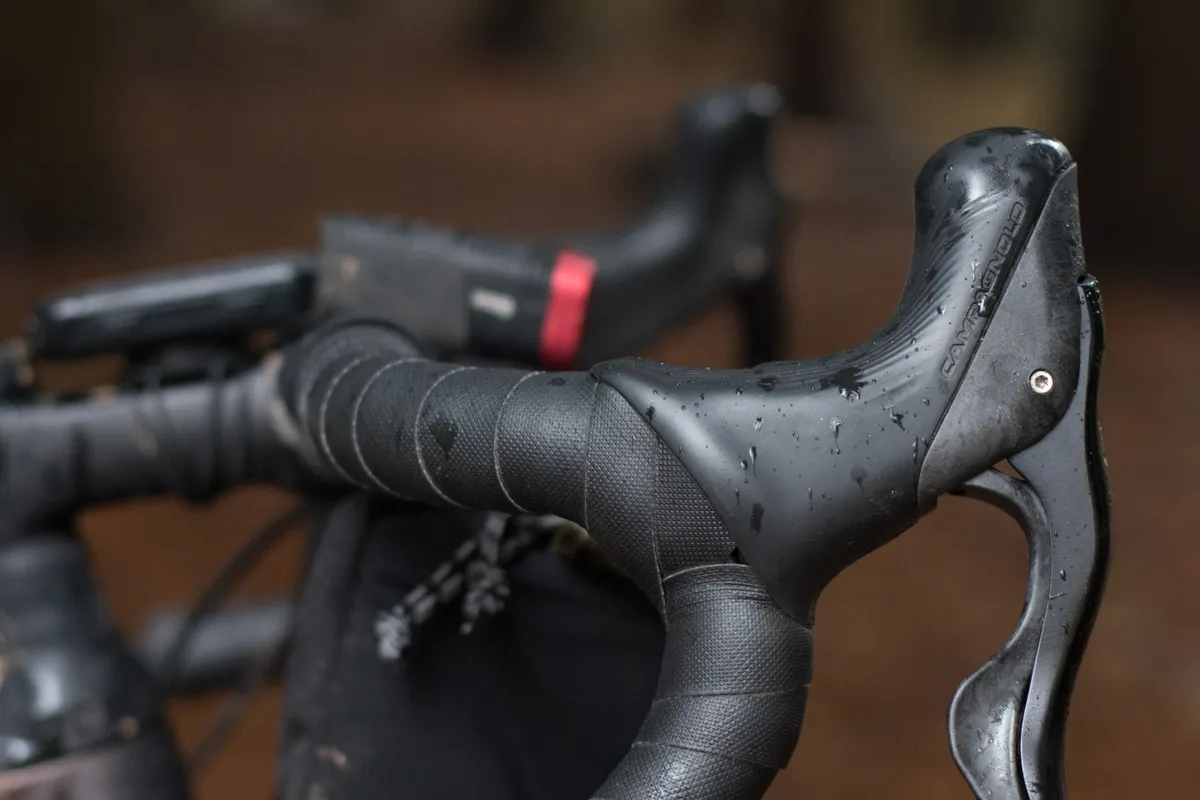
Staying on the ergonomics front, I didn’t love the transition from hood to bar that Ekar’s levers offer. This will of course vary to some extent between bars, and the positioning of the levers is a factor too, but, as tested on Specialized’s gravel drop bars, there’s a distinct bump at the back of the hood.
This may not bother you depending on your precise physiology, but I found there were times when this bump dug into the heels of my hands, and it was particularly noticeable when I was climbing out of the saddle, with more weight over the bars.
Campagnolo Ekar rear derailleur
There’s only one Ekar derailleur, so there won’t be any head-scratching over cage lengths and compatibility.
It’s built from aluminium and carbon-reinforced polyamide, with stainless steel hardware, and features a clutch to keep the chain in check.
While it doesn’t have the carbon-heavy allure of Campagnolo’s flagship road derailleurs, it’s a good looking piece of kit that feels very well made.
Like most newer derailleurs, Ekar uses internal hex head set screws to adjust the limits and pulley wheel clearance. This is handy if you find yourself making mid-ride adjustments because you’re more likely to have the correct bit on your multi-tool.
There’s a neat locking mechanism that engages when you pull the derailleur back, holding it out of the way to ease rear wheel removal. It releases via a switch on top of the derailleur body.
Despite this, the derailleur’s very strong springs can make aligning the wheel a bit of a pain, but it’s not a big deal.
Campagnolo Ekar crankset and bottom bracket
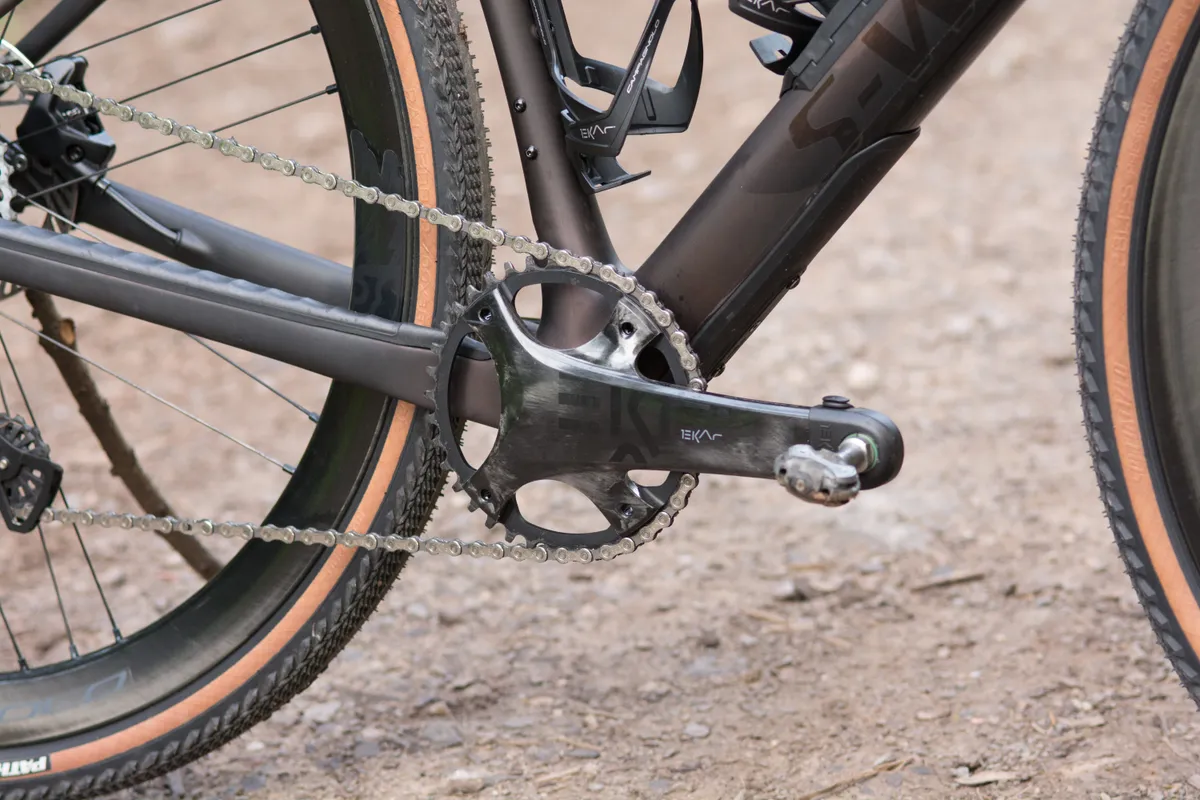
Ekar’s four-arm crank design draws heavily on Campagnolo’s road groupsets, but the bolt circle diameter is smaller at 123mm to accommodate the groupset’s 38t, 40t 42t and 44t narrow-wide chainrings.
The crank arms are carbon and the spindle – onto which the bottom bracket bearings are pressed – is steel, splitting in two at a Hirth joint.
Campagnolo calls this system Ultra-Torque, and has used it successfully on its road groupsets for a number of years.
My experience is that it’s relatively trouble-free, the only real downside being that you need specialist tools to replace the bearings. Basic cleaning is straightforward, though.
Ekar gets its own dedicated ‘ProTech’ bottom bracket cups, incidentally, which feature “a patented sealing ring and strong fibreglass-polyamide tube” to withstand the abuse gravel riding in varying conditions entails.
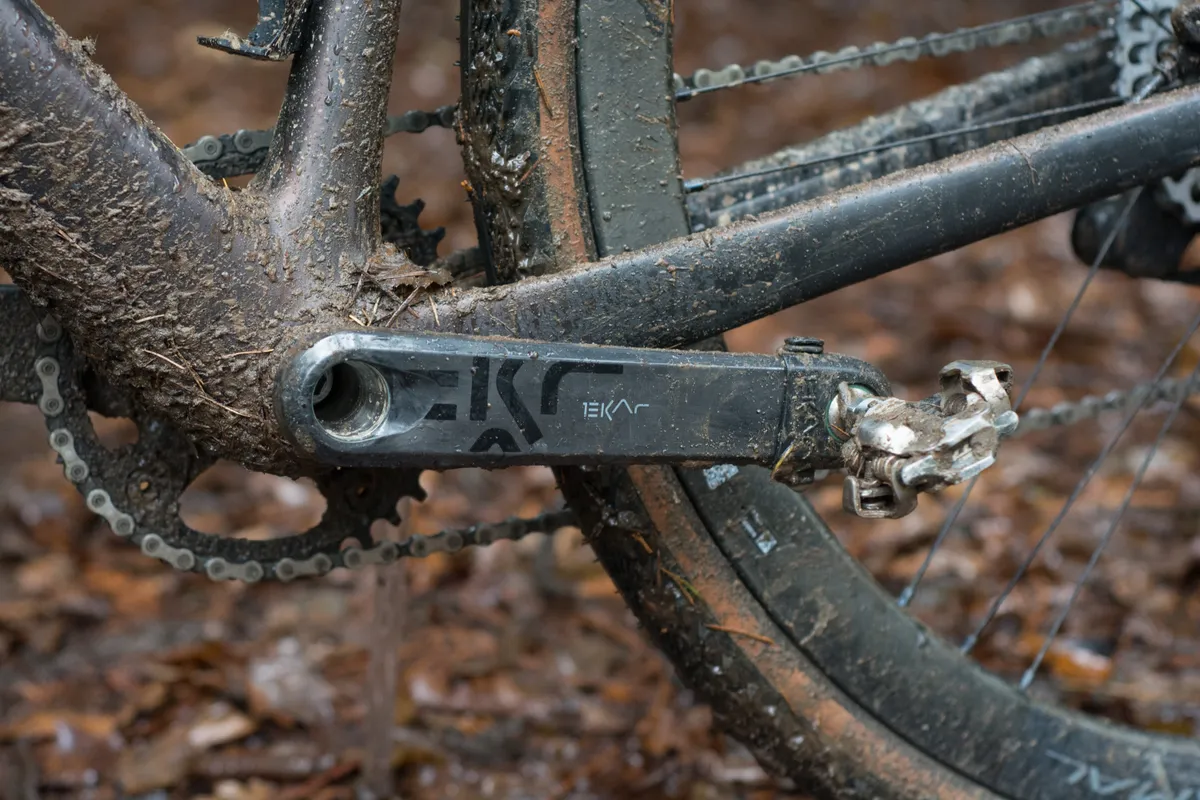
I didn’t have the Ekar test bike for long enough to wear the bottom bracket out, but I was pleased to note that the crank still looked pretty much like new after moderate abuse.
I tend to ruin cranks with my heels-in pedalling style, but the combination of the Ekar crank arms’ shape and a seemingly robust finish meant I didn’t here.
As a bonus, Campagnolo fits replaceable protective caps to the tips of the crank arms, so rock strikes are less of a worry.
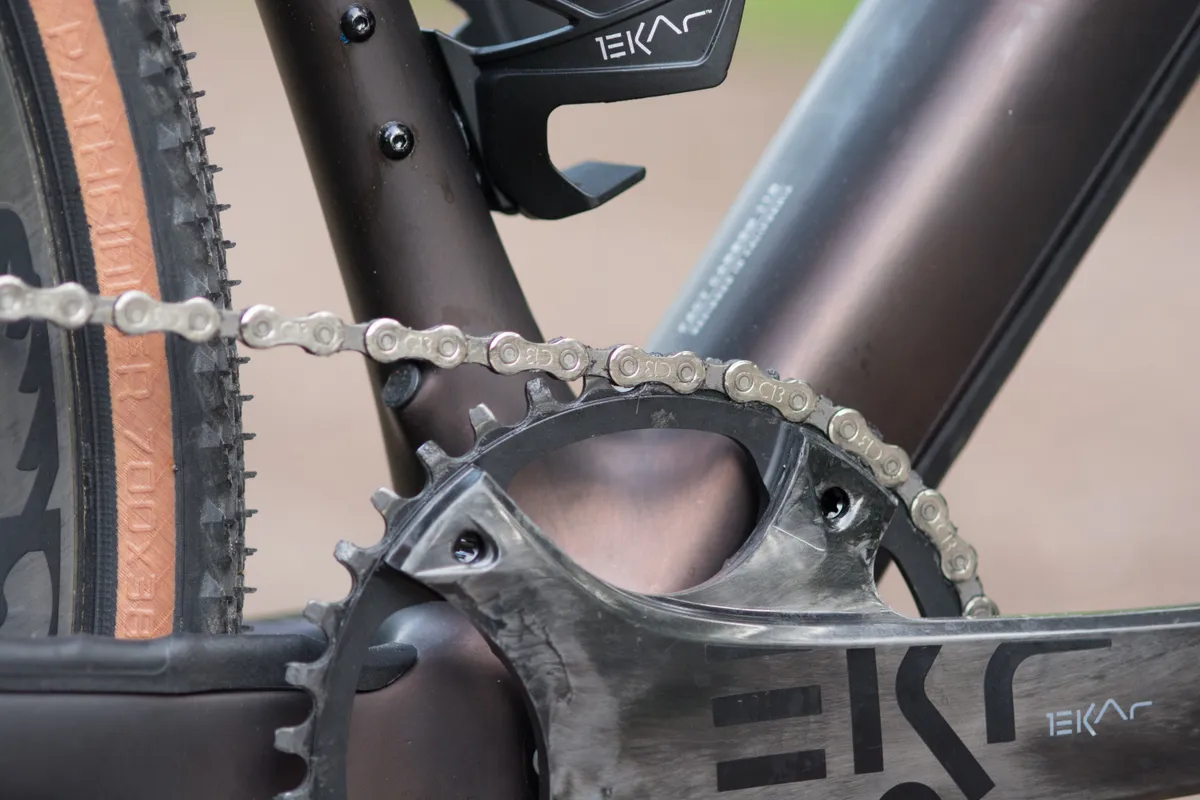
My test bike came with the smallest 38t chainring option, which places the chain within a hair’s breadth of the crank spider and does slightly give the assembly the look of a homebrew 1× conversion rather than a dedicated drivetrain.
I can’t fault its performance however and, in combination with the clutch derailleur, chain security is unimpeachable – I never suffered a drop during testing.
Campagnolo Ekar cassette, freehub and chain
Central to Ekar’s appeal is its gigantic 13-speed cassette which, in two of the three available ratios, starts with a tiny 9-tooth cog. The sprockets are all steel, while the carrier uses some aluminium.
To allow for that tiny cog, Ekar uses Campagnolo’s new N3W freehub, a shortened version of the existing road design.
This can be retro-fitted to current Campagnolo wheels and, if you buy a new set with an N3W freehub fitted as standard, an adaptor (essentially just a freehub extension) makes it possible to fit 10-, 11- and 12-speed cassettes.
N3W cassettes install with the same spline tool as previous versions but, rather than being entirely separate, the lockring is integrated into an assembly with the first four cogs, one which separates from the rest of the cassette.
My test bike came with the ‘Gravel Race’ 9-42 cassette, a middle ground between the 9-36 ‘Endurance’ and 10-44 ‘Gravel Adventure’ options, with ratios as follows:
- Endurance: 9-10-11-12-13-14-16-18-20-23-27-31-36
- Gravel Race: 9-10-11-12-13-14-16-18-21-25-30-36-42
- Gravel Adventure: 10-11-12-13-14-15-17-19-22-26-32-39-44
Ekar also gets its own chain, which is 0.25mm narrower than Campagnolo’s 12-speed ones, and apparently gets an ultrasound lube bath when it’s manufactured to ensure complete coverage.
The chain comes in C-Link (i.e. quick-link) and pin-joined variants.
Campagnolo Ekar brakes

Put simply, Ekar’s brakes are fantastic. As with Campagnolo’s road disc groupsets, Ekar’s brakes are Magura-derived and they use mineral oil as a braking fluid.
I got on really well with the shape of Ekar’s brake levers and, despite riding a test bike with the brakes set up Euro-style, I found the braking really confidence-inspiring with loads of power and excellent modulation.
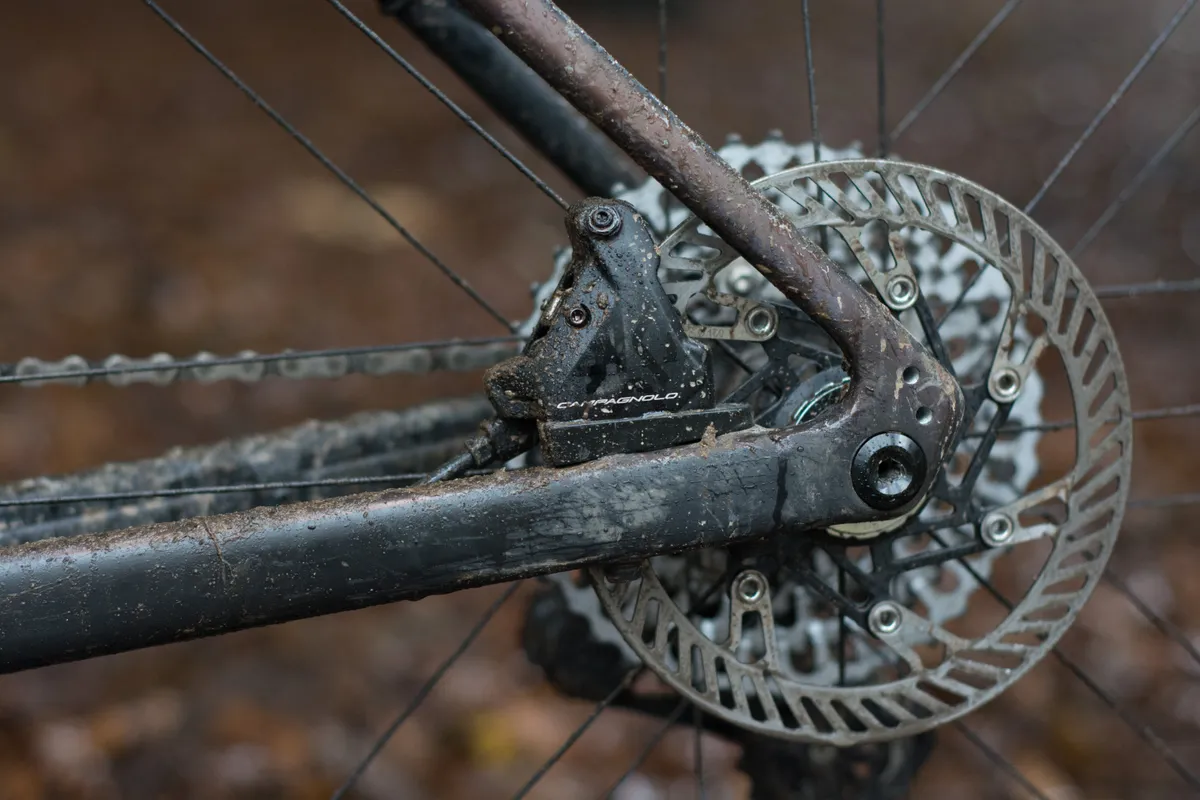
The pads have an organic compound and they perform well in proper filth. Like many disc brakes, they can be somewhat noisy in the wet, but performance doesn’t suffer.
The floating style stainless steel rotors come in 160mm and 140mm diameters and look a bit like ABS rings off a motorbike, which may or may not appeal, but they certainly get the job done, and they have a more nicely rounded edge than most, further reducing the (admittedly tiny) likelihood of injury.
Campagnolo Ekar weight
Claimed weights for individual components are as follows. We've also had the opportunity to weigh a separate set of components, these weights are listed in brackets alongside:
- Levers: 420g per pair (LH lever w/hose: 239g, RH lever w/hose and gear cable: 305g)
- Rear derailleur: 275g (273g)
- Cassette: 340g (9-36) / 390g (9-42) / 410g (10-44) (9-42: 396g)
- Chain: 242g (117 links: 242g)
- Crankset: 615g for 172.5mm, 38t (LH crank w/spider and 40t chainring 403g, RH crank arm 233g)
- Bottom bracket: 50g (BSA: 57g)
- Brake calipers: 110g front with adaptor kit / 95g rear with adaptor kit (125g each)
- Brake rotors: 157g (160mm) / 123g (140mm) (140mm: 124g, 160mm: 157g)
- Total measured weights: 2,677g
Campagnolo Ekar price
Individual component pricing for Ekar is as follows:
- Right-hand lever with hose, brake caliper and oil: £326 / $395 / €382
- Left-hand lever with hose, brake caliper and oil: £260 / $316 / €304
- Rear derailleur: £210 / $256 / €247
- Cassette: £226 / $274 / €265
- Chain: £40 / $48 / €46 (C-Link) or £38 / $46 / €44 (pin-joined)
- Crankset: £297 / $360 / €347
- Bottom bracket: £28 / $33 / €33
- Brake rotors: £31 / $41 / €36
More riding thoughts
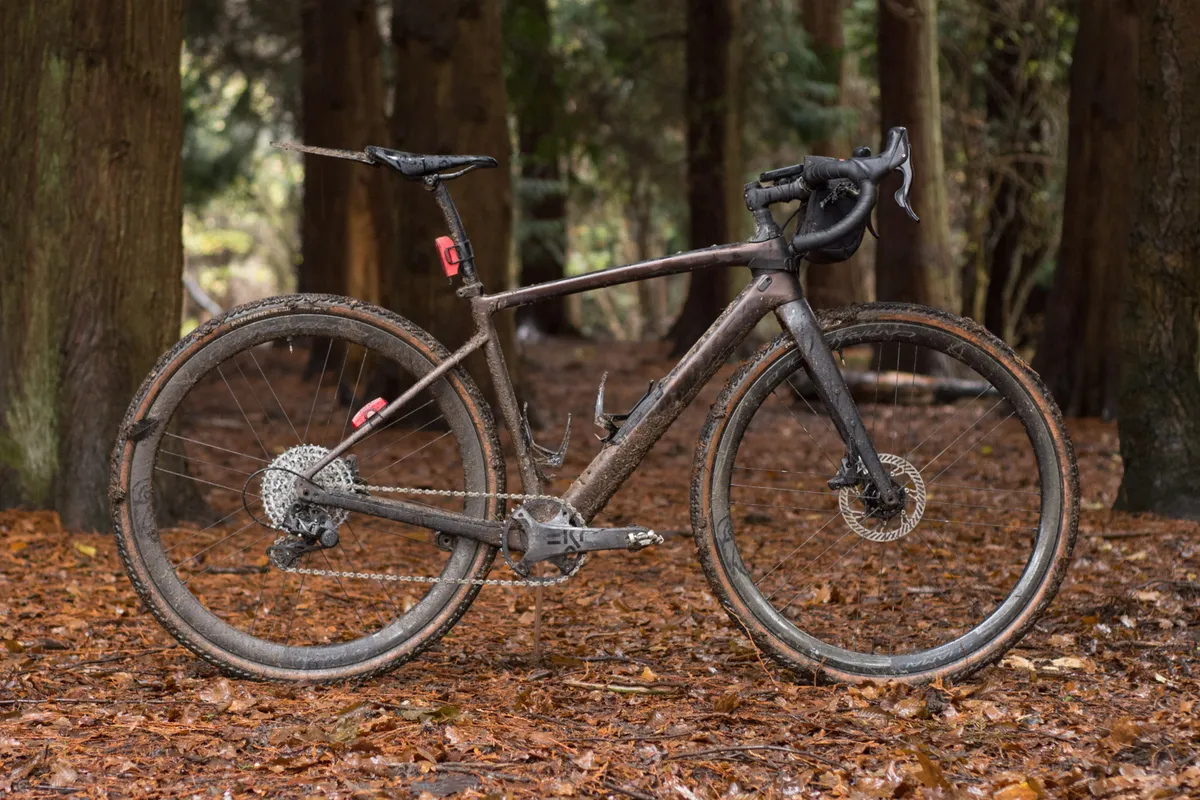
Campagnolo supplied a Specialized S-Works Diverge test bike outfitted with a full Ekar groupset and the latest Shamal DB carbon wheelset.
I rode the bike on a mixture of tarmac, fireroads and singletrack, and subjected the Ekar components to lashings of wintery Forest of Dean filth.
With the shifting dialled, Ekar is a good, competent gravel groupset with jumps between gears that feel well thought-out and natural.
The fact that it has 13 gears rather than 11 or 12 is meaningful when you’re comparing groupsets side-by side, but it doesn’t radically change the riding experience. However, it does make the case for 1× that much stronger – I can’t see many riders clamouring for a front derailleur with this many gears on offer.
When Ekar launched, many people speculated that a 9-tooth cog must be horribly inefficient – we know that larger sprockets and chainrings have lower mechanical losses than smaller ones.
I’m not in a position to measure Ekar’s efficiency, but in normal riding you certainly don’t notice it feeling any draggier than any other drivetrain and, in any case, you’re not going to be spending much time in the nine-tooth regardless – that’s a pretty big gear even with the smallest 38-tooth chainring option.
The drivetrain doesn’t sound or feel strained at either end of the cassette.
Ekar gearing: crunching the numbers
On the gearing front, Ekar’s cassette and chainring options are perfectly adequate for general riding, but the groupset may leave more adventurous riders – particularly those who like to carry loads – wanting lower gears.
If you want to nerd out about gear inches, the lowest gear as tested (9-42 cassette, 38t chainring) works out to 24.7in with a typical 700×38mm tyre.
The lowest possible Ekar gear (10-44 cassette, 38t chainring) would give you a 23.6in bottom end.
For comparison, with the same tyre, 11-speed Shimano GRX bottoms out at 24.1in for a 2× setup (30/34 low-end) or 26.0in for 1× (40/42).
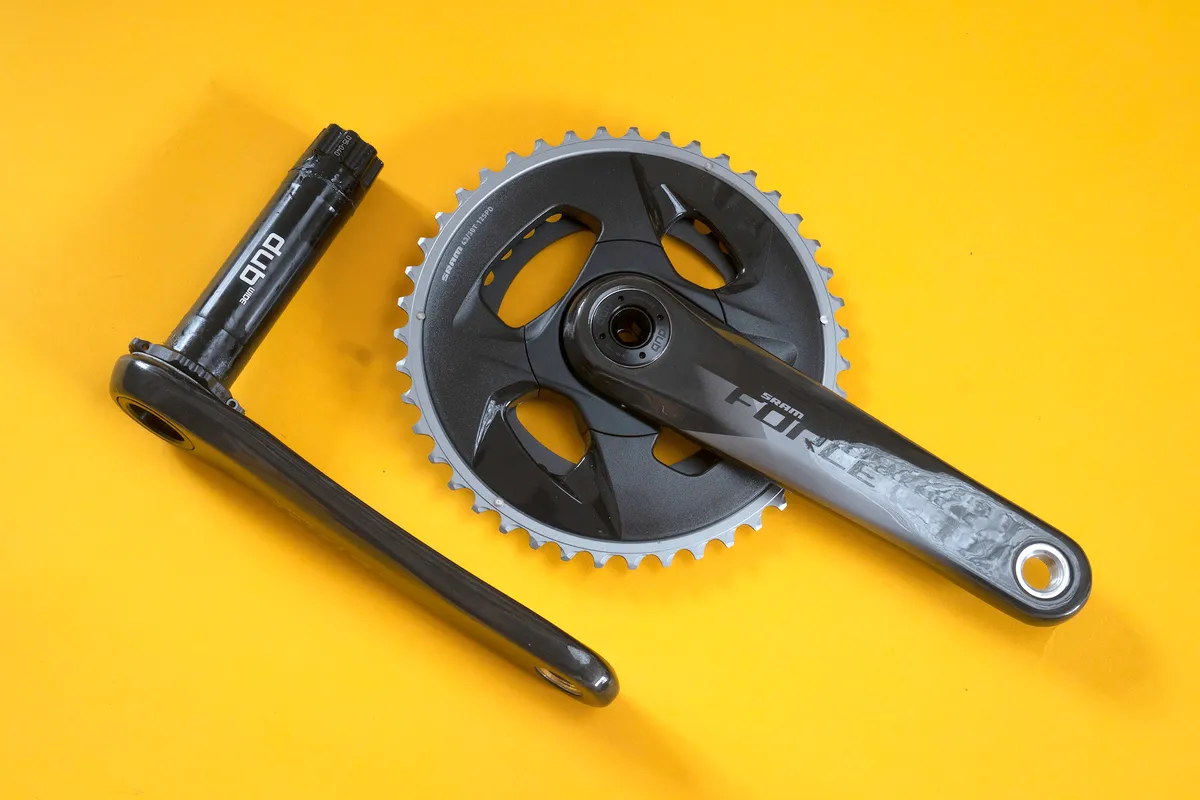
12-speed SRAM Force eTap AXS offers an ultra-low 22.8in gear with its low-range 2× crank and cassette option (30/36 gear), while 1× only gets you down to 27.3in (36/36). However, it’s possible to go ridiculously low with a ‘mullet’ setup if you add Eagle AXS components to the mix.
Meanwhile, 11-speed Force 1 (mechanical) offers the same bottom end as Ekar, with a 24.7in 38/42 low.
Suffice to say, Ekar offers some pretty low gears, however there aren’t currently any ways to go lower without experimenting with a third-party crank – the bolt circle diameter of Ekar’s crank means fitting a smaller chainring is impossible.
With both Shimano and SRAM, there’s scope to push the limits of rear derailleur capacity, raid the respective brand’s mountain bike groupsets for compatible parts or look to the aftermarket, but with 13 gears and its own freehub, those aren’t options with Campagnolo at the moment.
Campagnolo Ekar verdict
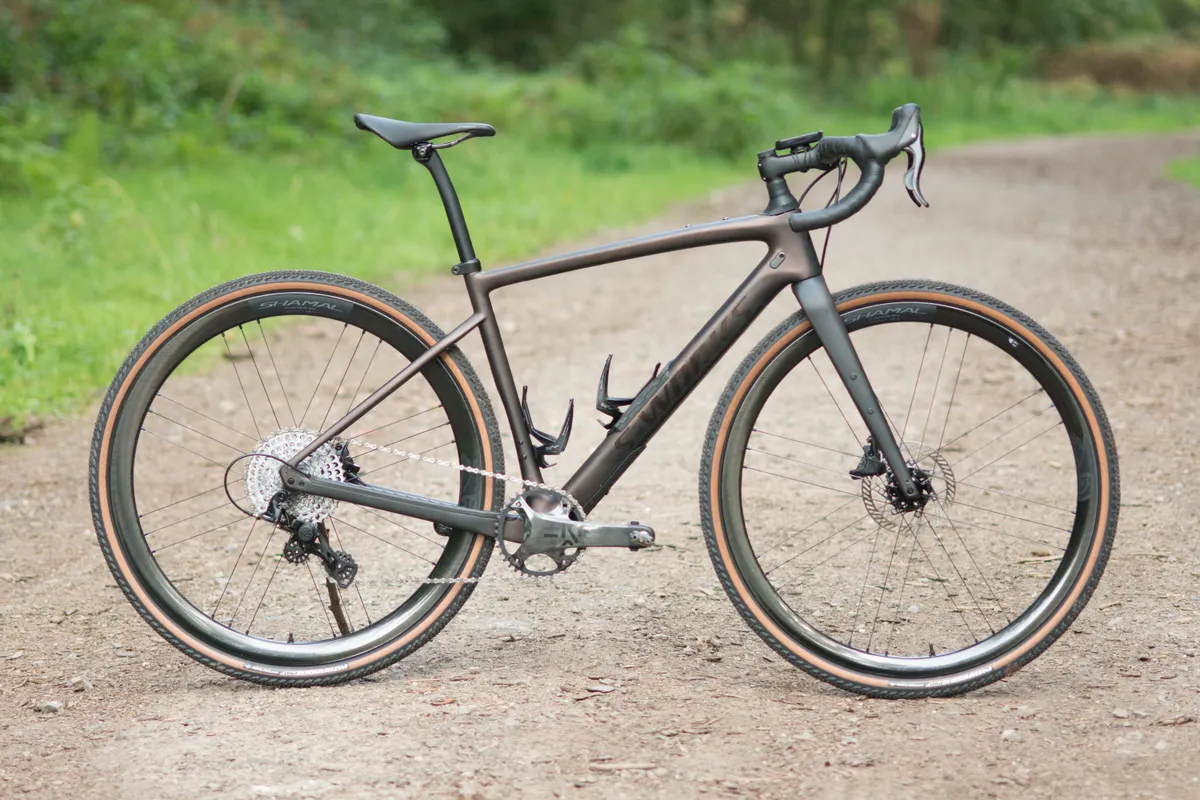
On the one hand, Ekar is a relatively expensive groupset that’s not the easiest to adjust, requires specialist tools to maintain and has some ergonomic quirks.
On the other, it offers 13 whole gears, it looks good and it performs well once properly adjusted.
The braking is excellent and the combination of range and gear spacing is well matched to everyday gravel riding.
Ekar’s new thumb shifter design is brilliant too, offering easy shifting from both hoods and drops on all terrain.
It’s hard to say if Campagnolo has done enough to tempt riders away from the big two players in gravel, but it’s a strong first effort.
Real world pricing is likely to be the decider for many riders (actual groupset pricing is often far removed from retail pricing), plus the choice of bikes offered with Ekar as standard.
It’s notable that a number of bike brands including Specialized, 3T, Wilier, Ridley and Pinarello have already jumped onboard, while manufacturers including DT Swiss, GW Manufacturing, Newmen, Roval and Tune have already promised to offer wheels with the new N3W freehub.
Campagnolo Ekar vs. Shimano GRX vs. SRAM Force eTap AXS
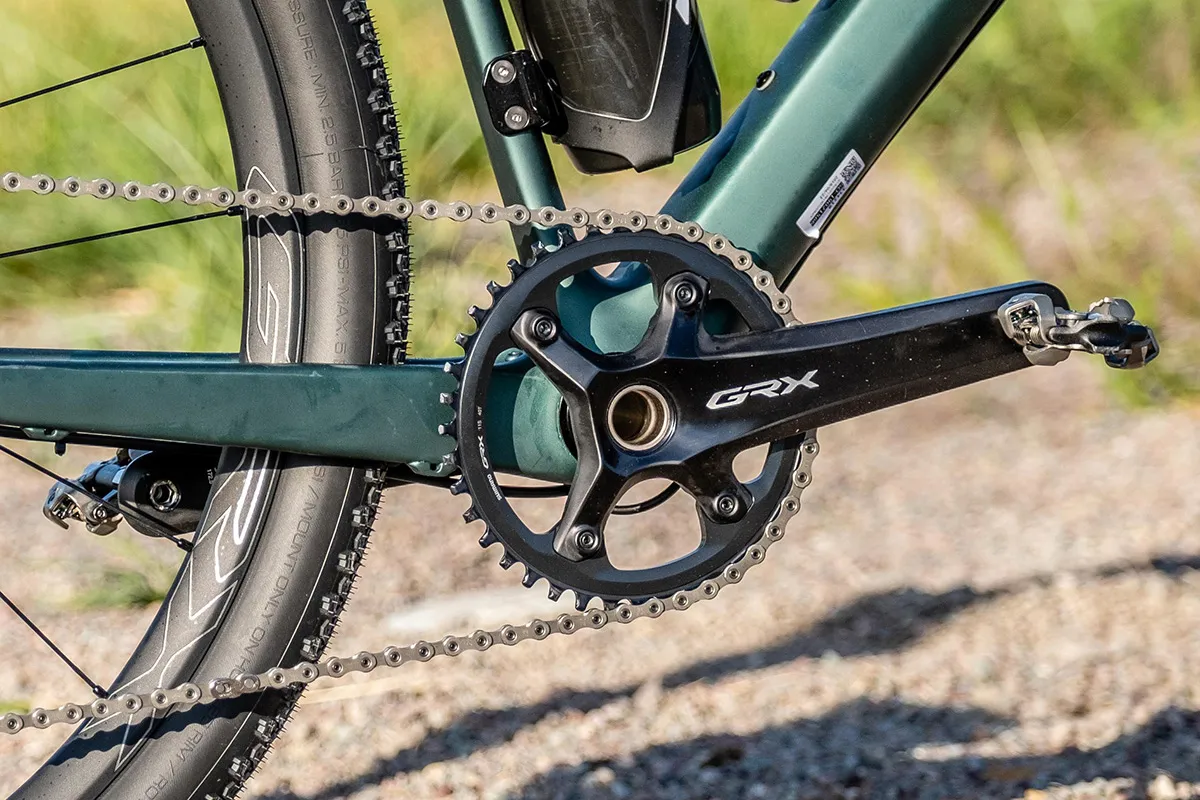
Where Ekar arguably struggles is on value. Its price puts it in direct competition with Shimano’s outstanding GRX Di2 components, some way below SRAM’s Force eTap AXS groupset, and some way above SRAM’s mechanical Force drivetrain.
Of course Ekar offers two more gears than Di2, but the lure of adjustment-free electronic shifting is strong, and of course going Di2 won’t necessitate a new wheelset or freehub for most riders.
Money aside, a lot of it comes down to personal preference. I’d hazard a guess many gravel riders will like Ekar’s very separate upshift/downshift arrangement, which is the polar opposite of SRAM’s one-lever DoubleTap.
If you’re happy to run a front derailleur, Shimano GRX makes a compelling case for itself, but its 1× offering isn’t quite as impressive when it comes to range and gear spacing.
Product
| Brand | Campagnolo |
| Price | €1696.00, £1449.00, $1764.00 |
| Weight | 2385g |
| br_whatWeTested | 38t crank, 9-42 cassette, 172.5mm cranks, BSA threaded BB |
Features
| Crank options | 1x |
| Speed | 13 |
| Brake type | hydraulic_disc |
| Features | Clutch rear derailleur, narrow-wide chainrings |
| Cassette options | 9-36, 9-42, 10-44 |
| Chainring options | 38t, 40t, 42t, 44t |

